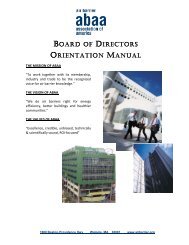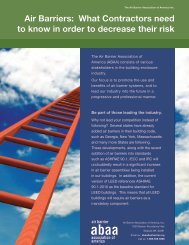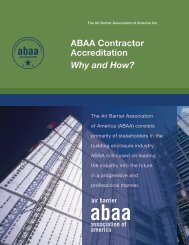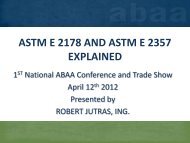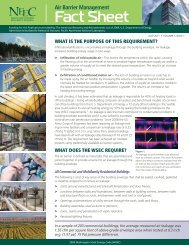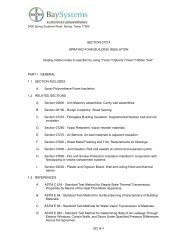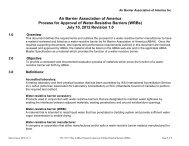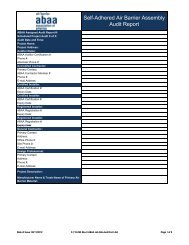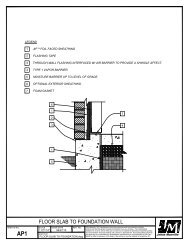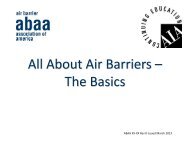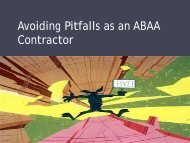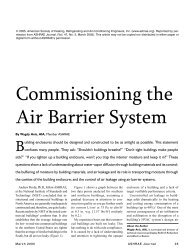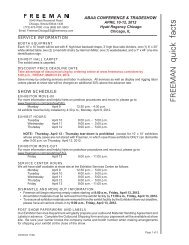Air Barrier Construction Design Details
Air Barrier Construction Design Details
Air Barrier Construction Design Details
You also want an ePaper? Increase the reach of your titles
YUMPU automatically turns print PDFs into web optimized ePapers that Google loves.
M A T E R I A L S A F E T Y D A T A<br />
HE032 - AIR-BLOC 32MR LIQUID EMULSION<br />
AIR/VAPOR BARRIER MEMBRANE<br />
S H E E T<br />
Page 2 of 5<br />
3. Hazards Identification - Continued<br />
Inhalation Hazards<br />
May cause respiratory tract irritation.<br />
Chronic/Carcinogenicity Effects<br />
This product or one of its ingredients present at 0.1% or more is listed as a carcinogen by NTP, IARC or OSHA. See<br />
Section 11 (Toxicological Information) for more details.<br />
4. First Aid Measures<br />
Eye<br />
In case of contact, hold eyelids apart and immediately flush eyes with plenty of water for at least 15 minutes. Get<br />
medical attention immediately if irritation develops and persists.<br />
Skin<br />
Remove contaminated clothing and shoes. Wash affected areas with soap and water.<br />
Ingestion<br />
Get medical attention immediately. DO NOT INDUCE VOMITING. Never give anything by mouth to an unconscious<br />
victim.<br />
Inhalation<br />
Remove the person from the contaminated area to fresh air. If breathing is difficult, give oxygen. Contact a physician if<br />
symptoms develop.<br />
5. Fire Fighting Measures<br />
Flash Point: >212 °F<br />
Flash Point Method: Setaflash<br />
Lower Explosive Limit: not available<br />
Upper Explosive Limit: not available<br />
Fire And Explosion Hazards<br />
Product is not considered flammable or combustible. Products of combustion include compounds of carbon, hydrogen,<br />
oxygen, including carbon monoxide.<br />
Extinguishing Media<br />
Carbon dioxide, water, water fog, dry chemical, chemical foam.<br />
Fire Fighting Instructions<br />
Keep containers cool with water spray to prevent container rupture due to steam buildup; floor will become slippery if<br />
material is released. Firefighters should wear self-contained breathing apparatus and full protective gear.<br />
6. Accidental Release Measures<br />
Contain and/or absorb spill with inert material (e.g. sand, vermiculite). Collect and dispose in accordance with applicable<br />
regulations. Avoid runoff to waterways and sewers.<br />
7. Handling And Storage<br />
Handling And Storage Precautions<br />
Keep containers tightly closed. Store in a cool, dry, well-ventilated area. Protect from physical damage. Protect from<br />
extreme temperatures. Keep out of reach of children.<br />
8. Exposure Controls/Personal Protection<br />
Engineering Controls<br />
Use with adequate general and local exhaust ventilation. When used outdoors, stay well away from building air intakes or<br />
close and seal the intakes to prevent product from entering building.



